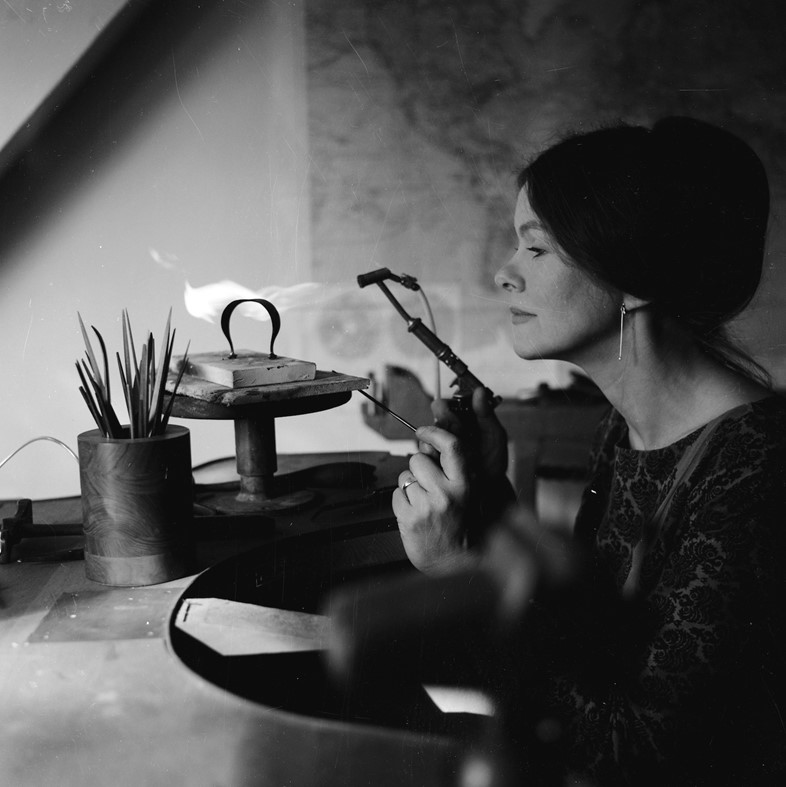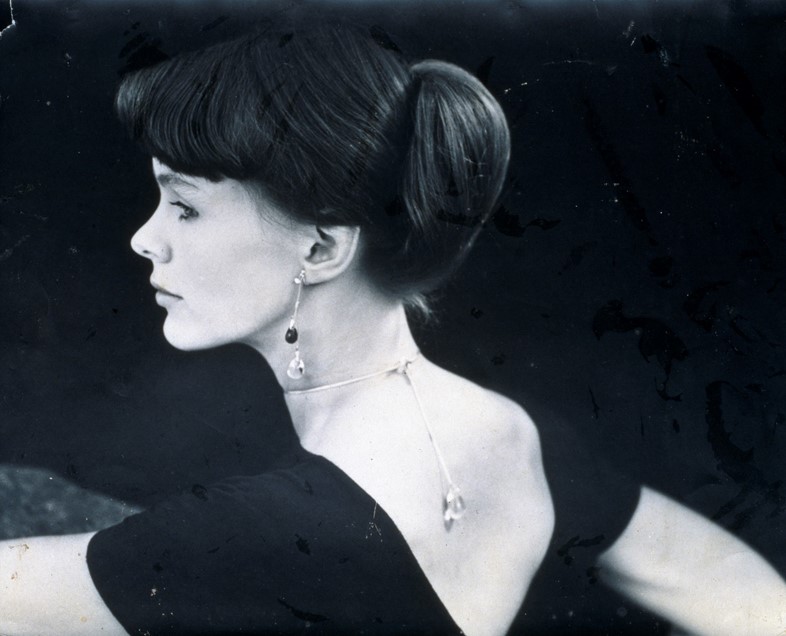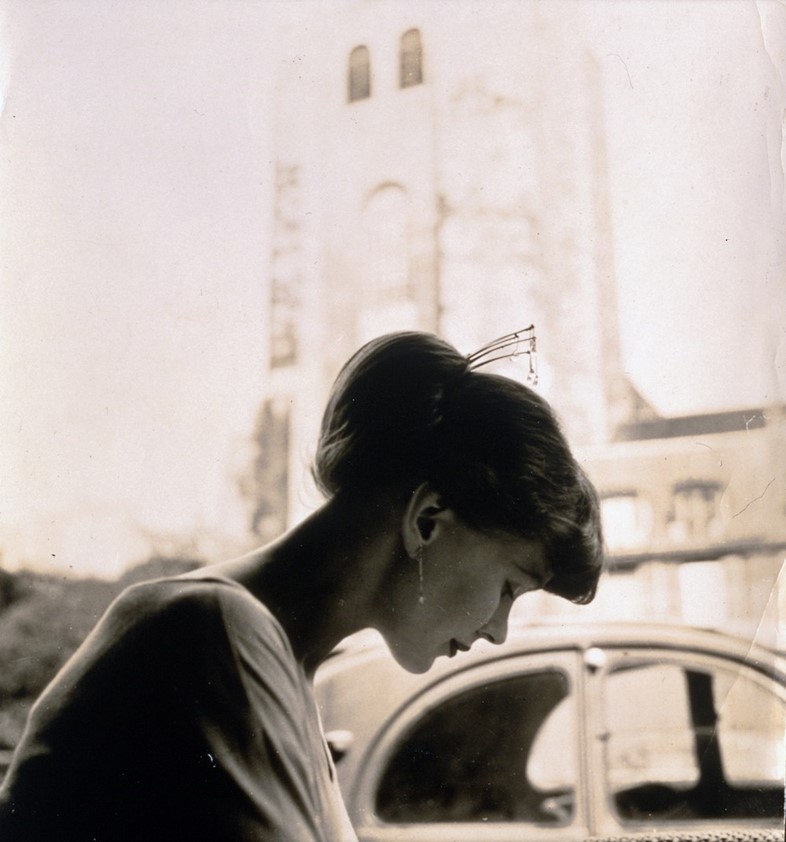Vivianna Torun Bülow-Hübe was the first female silversmith to receive international acclaim. Here, we explore her life and legacy
As the fast fashion market continues to grow exponentially, so too has the resurgence of craft-focused brands – particularly those making jewellery. The likes of Sophie Buhai, Annelise Michelson and Gala Colivet Dennison all exemplify a return to the art of silversmithing, and in the work that each produces the legacy of Vivianna Torun Bülow-Hübe is palpable.
Renowned for her ‘anti-status’ pieces, the Swedish jeweller Torun – as she was known colloquially – pioneered restrained simplicity during the mid-1950s (the same point at which Elizabeth Taylor begun amassing her lavish collection of diamonds, encouraged by third husband Mike Todd). Conversely, Bülow-Hübe, also on marriage number three at the time, was creating jewellery from hand-turned silver, pebbles and crystal. Indeed, these were pieces that “a woman would buy for herself, more than a man would buy for a woman,” says Nicholas Manville, senior vice-president of design at Georg Jensen, the iconic Danish silverware company with which Torun had a longstanding partnership. Here, we explore her life and legacy; from a chance meeting with Picasso on the beach to her work with Billie Holiday and Brigitte Bardot.

Seminal Moments
Born in Malmö, Sweden in 1927, as a young child Torun enjoyed spending time outdoors and had a particular love of ice skating. Later in her career, she would say that the patterns formed by the blades of her skates influenced the signature organic curves of her jewellery. In her early-20s, Bülow-Hübe studied at Konstfack in Stockholm, staging her first exhibition at the age of 21. Two years later, Torun spent the summer in France, where she would unknowingly first meet Picasso, who became a great admirer of her work. “When she lived in France she would go out and collect all of her stones for her jewellery on the beach,” explains Manville. “Torun ran into him there and didn’t know it was Picasso – so they were just having a very casual conversation about what they both did. Eventually, he invited her to show him her work in his studio.” Torun would go on to meet Henri Matisse, Georges Braque, Constantin Brâncuși and Jean-Paul Satre in Paris, referring to this period as her ‘adrenaline years’.

It was through her third husband, artist Walter Coleman, that she would also become involved in the jazz scene, meeting the likes of Billie Holiday, Abbey Lincoln and Brigitte Bardot, who all wore custom pieces made by Torun. In 1965, her marriage to Coleman broke down, and in 1967, she began working freelance with Georg Jensen, for whom she produced some of her most famous works, becoming the second most famous designer at the company behind Jensen himself. “She met the head of Georg Jensen at an award ceremony in the 1960s and it went from there,” says Manville. “She always made her own jewellery and that was very much the process here, too. You’ll never find a Vivianna sketch of anything – it was all done by hand, working with materials directly.” Torun died in 2004 at the age of 76, but had continued to make work up until this point. “I always needed to eat. Bills needed to be paid. But I need to work too,” she once said before her death. “There are still masses of ideas I want to formulate. I’m no good with words – I’d rather speak through the silver.”

Defining Features
“Her pieces are very much defined by a connection to the earth,” says Manville. “The stones she used aren’t overly worked, whenever there was one – often she would work solely with silver. She was trying to capture the natural essence of a material – and a diamond isn’t the most natural thing in the world, after it’s been processed.” Subsequently, the materials associated with Torun’s signature designs are granite, pebblestone, crystal, moonstone, mother of pearl, horn, and quartz, incorporated into pure, Modernist forms. Torun’s own personal style mirrored her penchant for simplicity, too, wearing a monochromatic, colour palette, offset by her own jewellery, her salt and pepper hair swept up into a chignon. Much like the unadulterated materials she worked with, Torun exuded an effortless elegance that was difficult to mimic.

She’s an AnOther Woman Because...
“Throughout my life I have done reckless things,” Vivianne Torun Bülow-Hübe once said. Certainly, such abandon paid off; for not only did Torun become the first ever female silversmith to receive international renown, she remains to this day one of the most seminal figures in the field of modernist design and craft. “We view it as our responsibility to educate people about what she did, because it’s pretty revolutionary stuff for the time,” says Nicholas Manville. “I think she started ahead of the curve, which helps one to become timeless. She made jewellery for the wearer – it was for those with an eye for fine art sculpture. Essentially, that’s what she made.”
